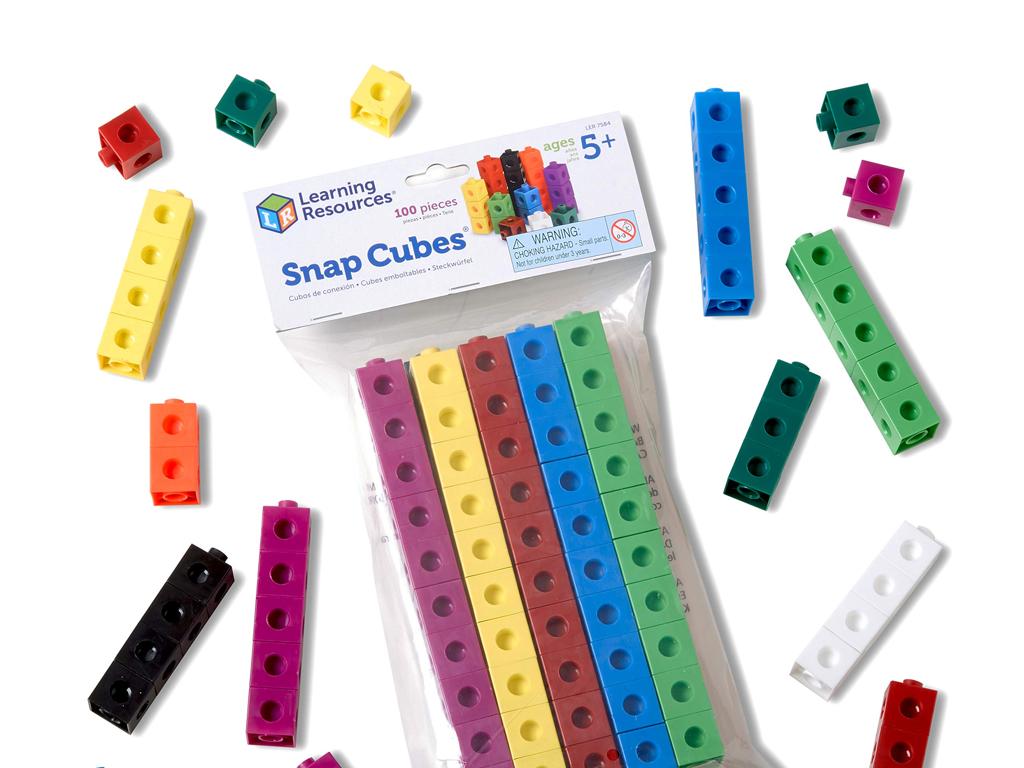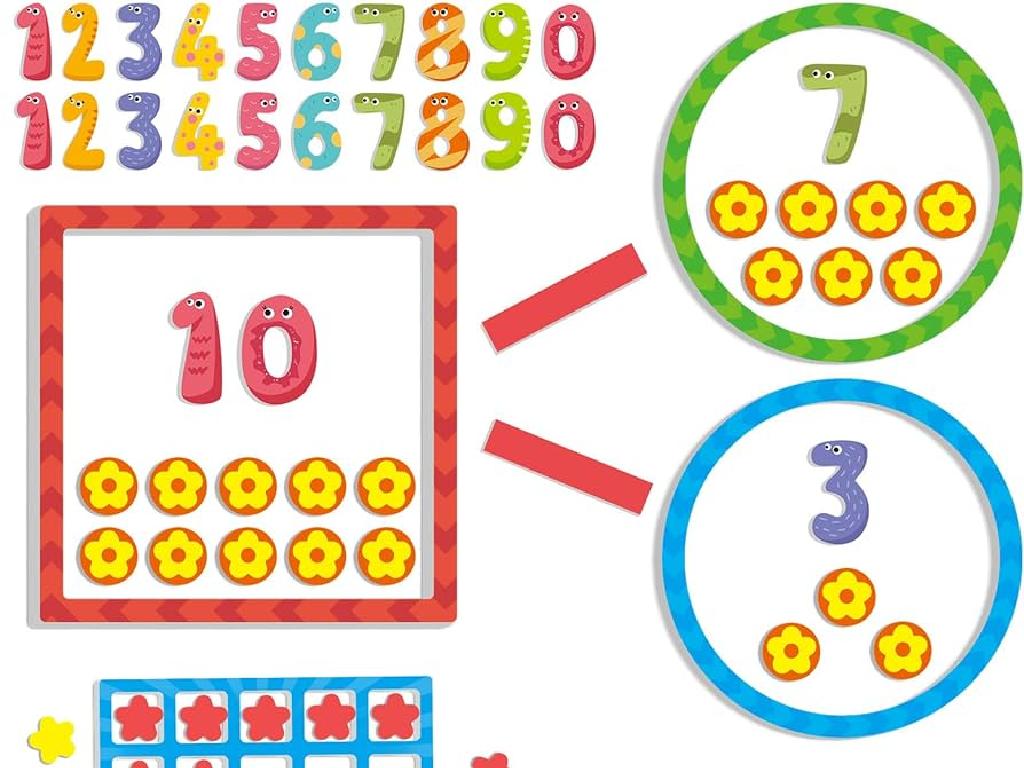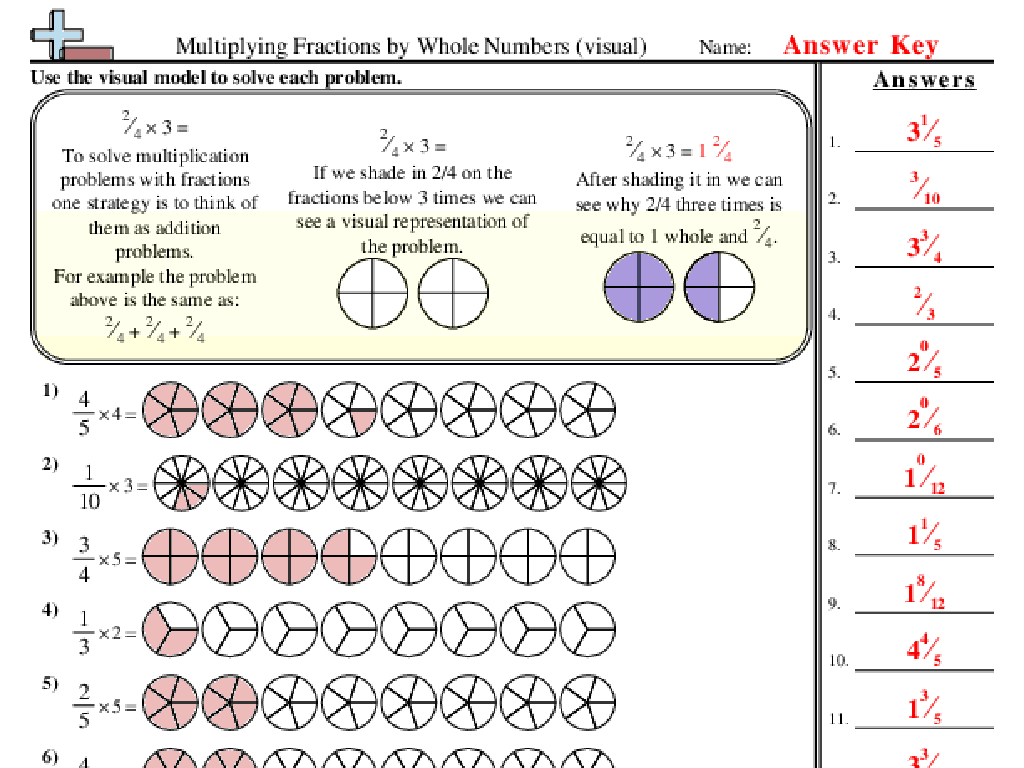Draw Quadrilaterals
Subject: Math
Grade: Fourth grade
Topic: Quadrilaterals
Please LOG IN to download the presentation. Access is available to registered users only.
View More Content
Welcome to Quadrilaterals!
– What is a quadrilateral?
– A shape with four straight sides and four angles.
– Find quadrilaterals around you
– Look for objects like tables, books, and screens.
– Basics: Sides and angles
– Every quadrilateral has four sides and four angles.
– Drawing our own quadrilaterals
|
This slide introduces students to the concept of quadrilaterals. Begin by defining a quadrilateral as a geometric shape with four straight sides and four angles. Encourage students to observe their surroundings and identify objects that have a quadrilateral shape, such as tables, books, and computer screens. This helps them connect the concept to real life. Explain that regardless of the side lengths or the size of the angles, having four sides and four angles is what makes a shape a quadrilateral. Conclude by guiding students to draw various quadrilaterals, emphasizing the basic requirement of four sides and four angles. This activity will prepare them for understanding more complex properties of quadrilaterals in future lessons.
Exploring Types of Quadrilaterals
– Identifying squares and rectangles
– Squares have 4 equal sides and rectangles have opposite sides equal
– Characteristics of a rhombus
– A rhombus has 4 equal sides but unlike a square, has no right angles
– Defining a parallelogram
– A parallelogram has opposite sides that are parallel and equal
– Unique traits of trapezoids
– Trapezoids have only one pair of parallel sides
|
This slide introduces students to the different types of quadrilaterals. Start by explaining that quadrilaterals are four-sided shapes. Then, describe each type: squares and rectangles both have four right angles, but squares have all sides equal while rectangles do not. Rhombuses have equal sides but no right angles. Parallelograms have parallel and equal opposite sides. Lastly, trapezoids are unique as they have only one pair of parallel sides. Use visual aids to help students remember these properties. Encourage students to draw each shape and label their sides and angles to reinforce their understanding.
Properties of Quadrilaterals
– Quadrilaterals: Sides, Angles, Vertices
– A shape with 4 sides, 4 angles, and 4 vertices.
– Parallel & Perpendicular Lines
– Lines across from each other are parallel, sides meet at right angles are perpendicular.
– Quadrilateral Symmetry
– Some have mirror-image halves, that’s symmetry.
– Calculating Area
– Area is space inside, multiply base by height.
|
This slide introduces students to the basic properties of quadrilaterals. Start by explaining that quadrilaterals are four-sided shapes and discuss the significance of sides, angles, and vertices. Highlight the concepts of parallel and perpendicular lines within quadrilaterals, using examples like squares and rectangles. Discuss symmetry, showing how to find symmetrical lines. Finally, teach them how to calculate the area of a quadrilateral by multiplying the base by the height, using simple shapes like rectangles to illustrate this concept. Encourage students to draw different quadrilaterals and identify these properties in each.
Drawing Squares and Rectangles
– Use a ruler for straight lines
– A ruler helps ensure lines are straight and even
– Create squares with equal sides
– All four sides must be the same length
– Draw rectangles, opposite sides equal
– Only opposite sides are equal and parallel
– Practice with different sizes
|
This slide introduces students to the basics of drawing quadrilaterals, specifically squares and rectangles. Emphasize the importance of using a ruler to achieve straight lines, which is crucial for accurate shapes. When creating a square, all sides should be of equal length, which can be checked by measuring with a ruler. For rectangles, focus on the fact that only the opposite sides need to be equal and parallel to each other. Encourage students to practice drawing these shapes in various sizes to understand the concept better. Provide them with grid paper to help them align their shapes and maintain proportionality.
Drawing Rhombuses and Parallelograms
– How to draw a rhombus
– A rhombus has four equal sides. Use a ruler to make them equal.
– Creating a parallelogram
– Opposite sides are parallel and equal. Draw two pairs of equal lines.
– Using a protractor to check shapes
– Place the protractor at corners to check angles are correct.
– Practice drawing with tools
|
This slide is aimed at teaching students how to draw two types of quadrilaterals: rhombuses and parallelograms. Start by explaining that a rhombus has four sides of equal length. Demonstrate how to use a ruler to ensure all sides are the same. Then, move on to parallelograms, highlighting that opposite sides need to be parallel and of equal length. Show how to use a protractor to measure angles and ensure the shapes are accurate. Provide students with rulers, protractors, and paper, and let them practice drawing these shapes. Encourage them to check their work with the protractor. This hands-on activity will help solidify their understanding of the properties of these quadrilaterals.
Drawing Trapezoids
– Recognize one pair of parallel sides
– A trapezoid has only one pair of sides that are parallel.
– Draw the non-parallel sides
– The other two sides are not parallel and can be of different lengths.
– Measure angles for accuracy
– Use a protractor to measure each angle to make sure they’re correct.
– Review and practice drawing
|
This slide introduces students to the concept of drawing trapezoids, focusing on the unique property of having only one pair of parallel sides. Emphasize the difference between the parallel and non-parallel sides, and the importance of precision when drawing. Demonstrate how to use a protractor to measure angles, ensuring that students understand how to use this tool effectively. Encourage students to practice drawing trapezoids with different side lengths and angles, reinforcing their understanding of the shape’s properties. Provide examples on the board and give them worksheets to practice on their own or in small groups.
Let’s Practice Drawing Quadrilaterals!
– Follow along to draw quadrilaterals
– Use a ruler for straight lines
– Ensure lines are straight and even
– Use a protractor for angles
– Measure angles accurately with a protractor
– Share your drawings with the class
– We’ll discuss everyone’s drawings
|
This slide is designed to engage students in a hands-on drawing activity. Start by demonstrating how to draw different quadrilaterals on the board, step by step. Encourage students to use rulers to achieve straight lines, which is crucial for accurate shapes. Introduce the protractor as a tool for measuring precise angles, explaining that quadrilaterals have angles that add up to 360 degrees. After the drawing session, create a supportive environment where students can showcase their work and discuss the different properties of the quadrilaterals they’ve drawn. This activity will help solidify their understanding of quadrilaterals’ characteristics and improve their drawing skills.
Class Activity: Quadrilateral Art!
– Create art with quadrilaterals
– Combine shapes to make a picture
– Present your art to the class
– Explain the quadrilaterals used
– Talk about squares, rectangles, etc. in your art
|
This activity is designed to help students understand quadrilaterals by incorporating them into a creative art project. Students will use different quadrilaterals such as squares, rectangles, trapezoids, and parallelograms to create a composite picture. They can draw a house using squares for windows, rectangles for the door, and a parallelogram for the roof. Encourage creativity and ensure they can identify and name the quadrilaterals they’ve used. After completing their artwork, each student will present their picture to the class and explain which quadrilaterals were used and why. This will reinforce their understanding of the shapes and their properties. For the teacher: Prepare examples of art using quadrilaterals, have drawing materials ready, and create a gallery space for the finished art.





